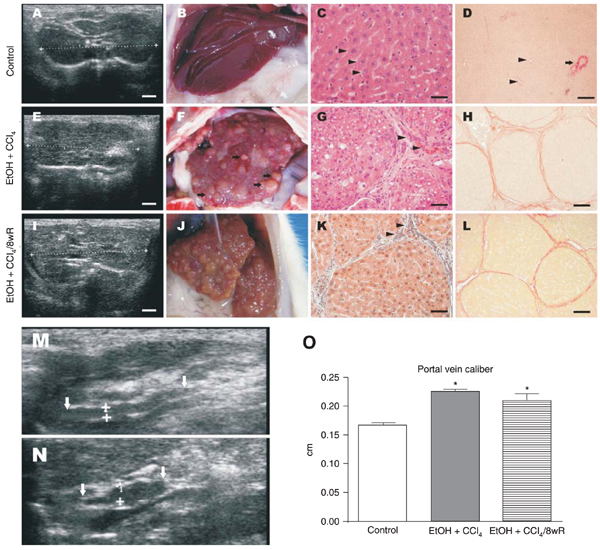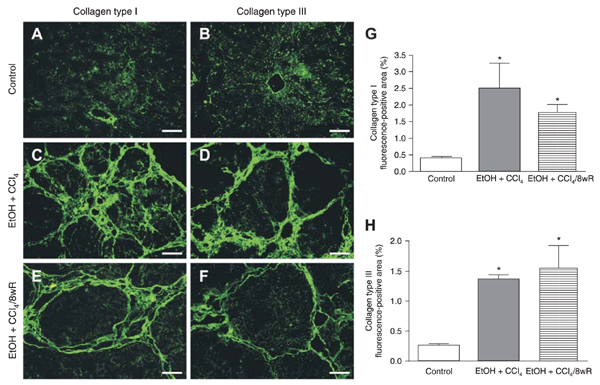We investigated whether liver injury by dual exposure to ethanol and carbon tetrachloride (EtOH + CCl4) for 15 weeks would persist after hepatotoxic agents were removed (EtOH + CCl4/8wR). After 15 weeks of hepatic injury with ethanol (5.5%, m/v) and carbon tetrachloride (0.05, mL/kg, ip), 5 of 11 female Wistar rats were sacrificed. The other 6 rats were maintained for an additional 8 weeks without hepatotoxic agents. Ultrasonography showed increased liver echogenicity and dilation of portal vein caliber in both groups (EtOH + CCl4: 0.22 ± 0.01 cm, P < 0.001; EtOH + CCl4/8wR: 0.21 ± 0.02 cm, P < 0.01) vs control (0.16 ± 0.02 cm). Histopathology showed regenerative nodules in both experimental groups. Histomorphometry revealed increased fibrosis content in both groups (EtOH + CCl4: 12.6 ± 2.64%, P < 0.001; EtOH + CCl4/8wR: 10.4 ± 1.36%, P < 0.05) vs control (2.2 ± 1.21%). Collagen types I and III were increased in groups EtOH + CCl4 (collagen I: 2.5 ± 1.3%, P < 0.01; collagen III: 1.3 ± 0.2%, P < 0.05) and EtOH + CCl4/8wR (collagen I: 1.8 ± 0.06%, P < 0.05; collagen III: 1.5 ± 0.8%, P < 0.01) vs control (collagen I: 0.38 ± 0.11%; collagen III: 0.25 ± 0.06%). Tissue transglutaminase increased in both groups (EtOH + CCl4: 66.4 ± 8%, P < 0.01; EtOH + CCl4/8wR: 58.8 ± 21%, P < 0.01) vs control (7.9 ± 0.8%). Cirrhosis caused by the association of CCl4-EtOH remained for at least 8 weeks after removal of these hepatotoxic agents. Ultrasound images can be a useful tool to evaluate advanced hepatic alterations.
Rat; Cirrhosis; Collagen; Ultrasound; CCl4; Ethanol




